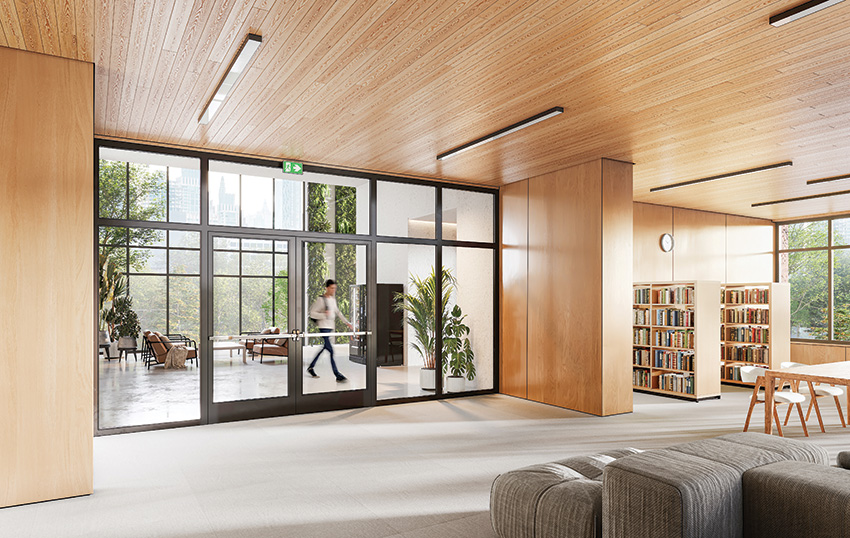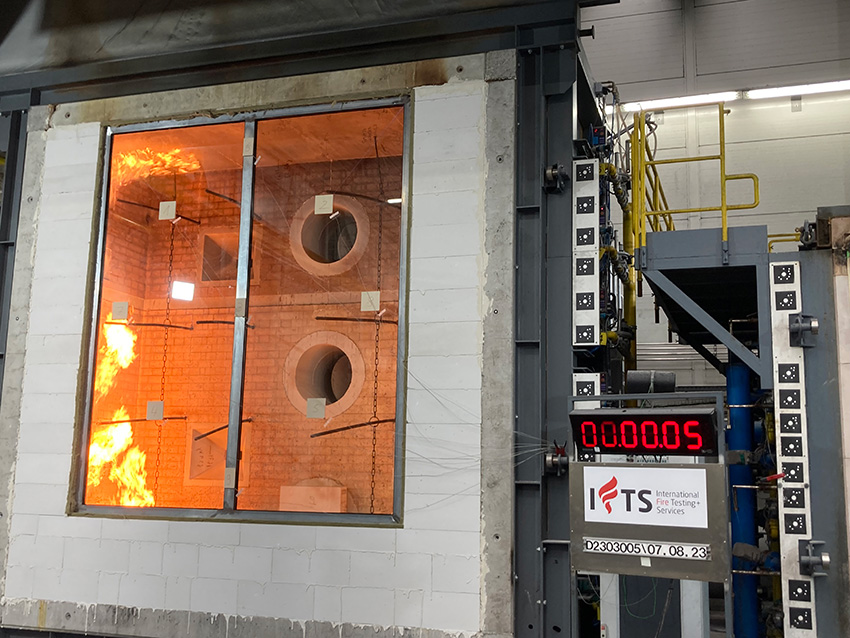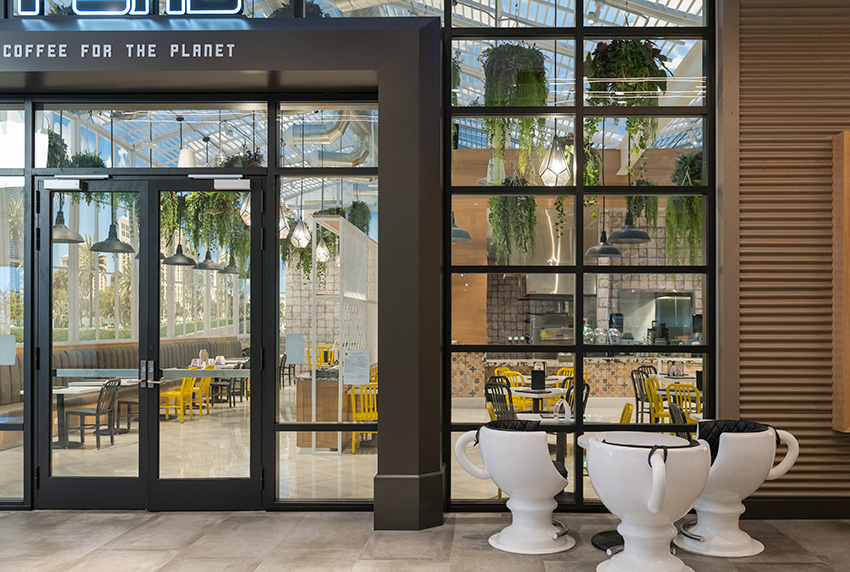Emerging Trends Influencing Innovation in Fire-Rated Glazing
Learning Objectives:
- Confidently draft fire-rated glazing specifications that meet code, satisfy environmental requirements, and navigate project glazing necessities.
- Examine how aesthetic trends and skilled labor shortages have influenced the design and adaptation of fire-rated glazing technology.
- Analyze applicable environmental standards and certifications to examine how fire-rated glazing can contribute to decarbonization and green building requirements.
- Explain how the introduction of innovative fire-rated glazing, using a single intumescent chamber to meet all ratings, can meet multiple market challenges, including sustainability goals and optimization of points under LEED and WELL.
Credits:
This course is approved as a Structured Course
This course can be self-reported to the AANB, as per their CE Guidelines
Approved for structured learning
Approved for Core Learning
This course can be self-reported to the NLAA
Course may qualify for Learning Hours with NWTAA
Course eligible for OAA Learning Hours
This course is approved as a core course
This course can be self-reported for Learning Units to the Architectural Institute of British Columbia

Photo courtesy of Vetrotech Saint-Gobain North America
Advances in fire-rated glazing adhere not only to stringent life-safety requirements, they also facilitate greater sustainability.
Preserving health, safety, and welfare are fundamental aspects of building design practice. Fire-rated glass is an essential asset in this practice. Fire-rated glass is classified as a life-safety building material and its use is governed by the International Building Code (IBC). To receive its rating, glass is assessed by performance during standardized testing. How long the glass will stop the spread of fire and smoke determines how the glass is classified. Typical clear glass will fail at a temperature difference approaching 250°F. Fire-rated glasses can protect people and property at temperatures exceeding 1,600°F.
Beyond life safety and code, new innovations in fire-rated glazing can also support sustainable construction practices, shaping a future of safer, healthier, and more environmentally responsible structures. As decarbonization and green building requirements influence fire-rated glass, incorporating pioneering fire-rated glass products provides creative design options while still adhering to current model building codes. The new generation of fire-rated products is available in larger sizes that can withstand a fire for longer periods of time, and many fire-rated products can provide solar control and better energy efficiency.
Fire-Rated Glazing 101
It is important to understand the categories of fire-rated glass products, as well as the related test standards and current building code requirements for specifying architectural fire-rated glazing.
The most critical areas of application for fire-rated glazing are fire doors, the elevator lobby, atrium wall assemblies, fire exit staircases, egress corridors, exterior walls, car parking areas that occur within the basement, areas of refuge, and data server or instrument control rooms. Other building elements that may contain fire-rated glass are windows, partitions, curtain walls, skylights, glass floors, and smoke barriers.
Fire-Protective and Fire-Resistive Glazing
Fire-rated glazing falls into one of two categories: Fire Protective and Fire Resistive.
Fire-Protective glazing defends against smoke and flames. Products with Fire-Protective labeling do not protect against radiant heat and do not need to be installed in a fire-rated frame. This glass is rated for between 20 and 180 minutes of performance. Examples of Fire-Protective products include wired glass, tempered glass, and ceramic glass.
Fire-Resistive glazing defends against smoke, flames, and radiant heat. The product is rated for between 60 to 180 minutes. Under ASTM E199, qualifying products protect against radiant heat and must be installed within a fire-rated frame to achieve performance. For a frame system to achieve fire-resistive status, the complete assembly, both glass and frame, must maintain the same fire rating. This allows all the elements of the system to work and perform together. Thermally broken steel profile systems used in conjunction with fire- and safety-rated glazing products provide a barrier to radiant and conducted heat transfer. The glazing unit’s interlayer(s) absorbs energy from fire and limits transmission of radiant heat to the non-fire side.
Intumescent glazing, introduced in the 1990s, is the glass of choice for Fire-Resistive glazing. It is the most advanced in design. Intumescent glazing works by compartmentalizing smoke, flames, and the dangerous transfer of radiant heat. During manufacture, there are two main methods of production. In the first method, heat-absorbing polymer is placed between two layers of tempered glass. In the second method, thin layers of transparent intumescent material are sandwiched between layers of either tempered or annealed glass. Intumescent glazing ranges between ¾-inch up to 4-inch thickness.
During a fire, intumescent glazing reacts in specific and predictable ways. When heated, a series of reactions occur: first, the exposed layer of glass cracks. This activates the first layer of intumescent material. The panel then becomes opaque, reducing heat transmission. Under prolonged heating this intumescent layer is eventually degraded and the second layer of glass cracks. The process repeats itself through all layers present in the glazing. The number of layers is dependent on the fire rating. Critically, when exposed to fire, glass on the unexposed surface remains cool and does not slump.

Photo courtesy of Vetrotech Saint-Gobain North America
Glazing undergoing performance testing at International Fire Testing Services.
Directly Comparing Fire-Protective and Fire-Resistive Glazing Performance
As discussed, fire-protective glazing contains smoke and flames but does not protect against heat. During a fire, heat is transported through glass via the transfer of thermal energy by invisible electromagnetic waves, or radiation. While fire-protective glazing is effective at containing the flames and spread of a fire, it cannot shelter occupants from heat transfer. Additionally, fire-protective glazing cannot exceed greater than 25% of the total wall area. The most typical fire ratings for fire-protective glass are 45 minutes and 90 minutes.
Fire-resistive glazing defends against smoke, flames, and radiant heat. During a fire, prolonged exposure is possible, and egress is facilitated with fire-resistive glazing. The glazing does not transfer heat, allowing occupants to move past the glass safely. Typical fire ratings are 60 minutes and 120 minutes. To be truly fire resistive, the fire-resistive glazing must be mounted in fire-resistive framing. In this configuration, the transparent wall assembly is not limited in size or application.
Fire Codes
In most buildings, there will be designated compartments that are designed to keep a fire contained in the event of disaster. These are defined in Chapter 7 of the International Building Code (IBC) as: Fire walls, Fire barriers, and Fire partitions. The IBC provisions govern the materials, systems, and assemblies used for structural fire resistance and fire-resistance-rated construction that safeguard buildings from the spread of fire. Fire-resistive-rated compartmentalization is recognized by NFPA 257 as an effective method of restricting fires to their area of origin or limiting their spread.

Photo courtesy of Vetrotech Saint-Gobain North America
Large expanses of glass are a hallmark of contemporary design, driving glazing technology to meet new benchmarks in safety and sustainable performance.
Fire testing standards include:
- ASTM E119: Standard Test Methods for Fire Tests of Building Construction and Materials.
- UL 263
- UL 10 C
- NFPA 80: Standard for regulating the installation and maintenance of fire protective openings in walls, floors, and ceilings.
- NFPA 252: The standard for fire door systems.
- NFPA 257: The standard for windows, glass block, and other lite-transmitting assemblies.


















